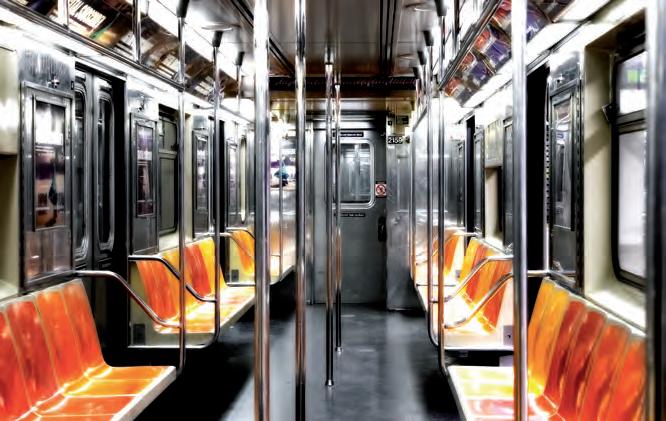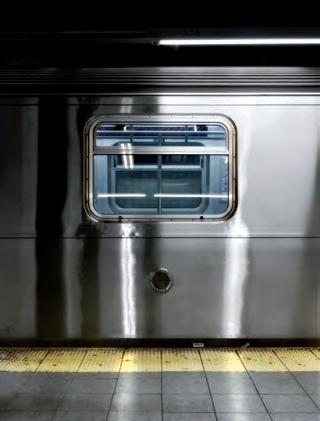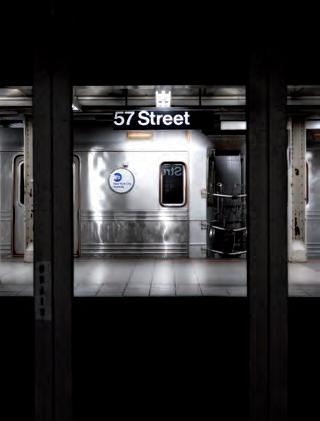
6 minute read
A Glance in the City
from TWSM#7
Workplace A Glance in the City
Looking for a City to Sleep
Advertisement
This article examines how sustainable transportation together with an effective environmental approach and well-organized security scheme in some working capitals can positively link their inhabitants’ work as well as personal lives.
By THATIANA SILVEIRA DOS SANTOS
How urbanites move around their cities and how urban mobility may enhance or damage their personal as well as professional achievement.
WE ALL WANT TO LIVE IN THE CITY
The world is experiencing the largest waves of urban expansion in history, due in part to unquantifiable numbers of people migrating to regions that they perceive to be more economically advanced along with a better quality of life. According to the the European Commission legislation on Urban Transportation, the majority of European populace lives in metropolitan areas, with above 60% of them residing in regions with more than 10,000 inhabitants. Yet, according to the EU, those urban dwellers are most likely living their daily lives in spaces that are the equivalent size and with similar transportation infrastructure as their previous residence.
NYC: AN URBAN ENVIRONMENT DESIGNED FOR PEDESTRIAN
New Yorker Christopher Nutter, a 41-year-old title-holder of Nutter Media Public Relations, says that New York City is a very special capital due to its rapid commercial growth, high-quality public services in addition to its cultural multiplicity. “What is totally unique about New York City compared with other American cities, except perhaps Boston, is that it is a pedestrian city suited to walking, and has a public transportation system of subways and buses that eliminates the need of a car. Since I work for myself in a home office, I do not have to travel to work every day, but I did for so many years and it was never harder than a 5 or 10 minutes walk to a subway or 5 to 10 minutes on a subway if not another 5 to 10 minutes walk to the office.” says Mr. Nutter. “Because NYC’s infrastructure is very efficient, I can walk out of my apartment in Chelsea knowing that I can get anywhere in downtown Manhattan by foot, if the place I’m going to is nearby, or I can simply step into a subway car if it is in another part of town. If I need to get somewhere quickly, I take a taxi or a car service. New York is an urban environment designed for pedestrians to get around on foot or by public transportation. It definitely improves my quality of life here,” finishes Mr. Nutter.
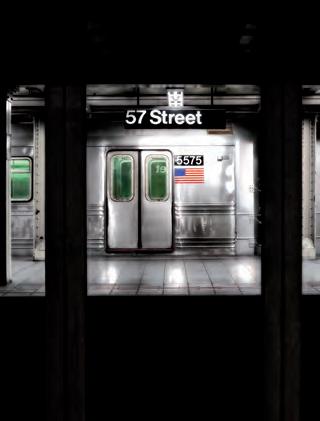
SÃO PAULO: NEEDS A PEDESTRIAN FRIENDLY URBAN ENVIRONMENT In the capital of São Paulo, Brazil’s biggest city with near to 11 millions residents, the 34-year-old consultant of Application Systems, Fabio Pascallini, explains that mobility has a different aspect for Paulistas, São Paulo citizens, who live near the center of the city and for those who live far away from it. “Sustainable transportation is most certainly the main significant feature for urban mobility enhancement that con-
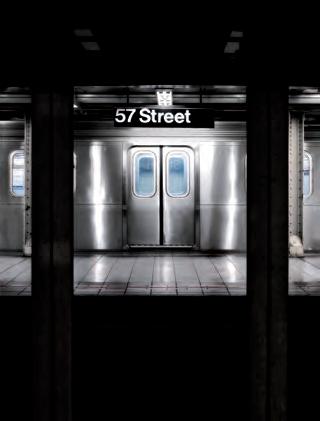
sequently will offer metropolitan dwellers a possibility to maintain a constructive relation between their work and individual lives. In São Paulo, residents who live close to the center have most likely a better quality of life because the transportation system is quite efficient plus since the majority of people work in the center of São Paulo, the proximity to their offices can make their journey trouble-free. São Paulo has intense traffic, which can be a headache. In addition to that, residents who live near the center of São Paulo will not need a car to benefit from numerous gastronomic, cultural events as well as the commercial locations that São Paulo has. I believe these facts can contribute to improve São Paulo’s residents social well-being,” says Mr. Pascallini. According to the Institute for Transportation and Development Policy (ITDP), a non-profit global organization with a mission to build sustainable transportation solutions in main cities around the world in order to reduce greenhouse gas emissions, São Paulo’s automobile traffic has been showing progress lately.
A PARTICIPATORY DEVELOPMENT PLAN FOR THE NEW URBAN MOBILITY PLAN
The reason for these mobility plans is to develop projects in São Paulo, which when implemented can reduce traffic intensity, as well as revitalize the city’s cultural, residential and commercials centers. For instance, the Pilot Bicycle is a project launched in São Paulo by ITDP in 2007 with the objective to reduce traffic congestion during weekends by supporting residents’ use of nonmotorized transportation such as bicycles. According to ITDP, Pilot Bicycle was implemented in São Paulo’s main neighborhoods such as Butanta, the city’s wealthiest region, Grajau, the city’s working-class area and Paraisopolis, São Paulo’s largest underprivileged area. Additionally, the Institute for Transportation and Development Policy launched a social event where the cities that participated in its program will have to design a diagram presenting their sustainable urban mobility plan for 2030. According to the ITDP, the cities that have the best performance will have a chance to expose their work at an art exhibition which will be announced at a later date. The event will take place in September 2011.
HOW CAN A PRIVILEGED CITY WITH THIS MUCH CHARM HAVE SO MUCH TRAFFIC? Despite the fact that New York City and São Paulo representatives have been implementing key strategies to improve their urban mobility framework, as well as their residents’ social wellbeing as this article mentioned previously, some well-known cities seem to be in the dark when the subject matter is urban mobility and public services development. According to the 55-yearold Italian Art Producer, Valter Laconi,
01, 02, 03, 04, 05 Subway © Luc Dratwa 2011. Manhattan is asleep. The streets are empty and only few taxis are going back to midtown. Walking on the street wet and cold on the 6th Avenue, Luc Dratwa saw the vapors of the subway coming out the grids and he decided to go down the depths of Manhattan, watching the tube completely empty. He came back several times before deciding to take pictures of this sleeping city moment.
who was born and raised in Rome but has been living abroad for many years, Rome does not offer its residents an efficient urban mobility and its public services are mostly inefficient because the city’s principles are still based on the past era. “Rome is a city that has a lot of culture as well as an amazing gastronomy and wine varieties, however, the city in general does not work well because its structure is still old. For instance, the city still does not have enough parking spots because the majority of Rome’s buildings were constructed in the 60s and 70s, when garages were not necessities. The traffic is exhaustive because there are too many cars on the streets and the majority of the city’s residents go to work by cars or Vespas, the traditional Italian motorcycles. In addition to that, Rome currently has only two subway lines. The streets are tiny and because of that it has always been a problem too and we Italians are crazy about owning state-of-the-art cars. Rome’s public transportation is deficient, meaning, the city has too many people and a small amount of public transportation circulating. Since I came back from Los Angeles, my most recent residence, I have been struggling to move around Rome, Laconi. • ” says Mr.
